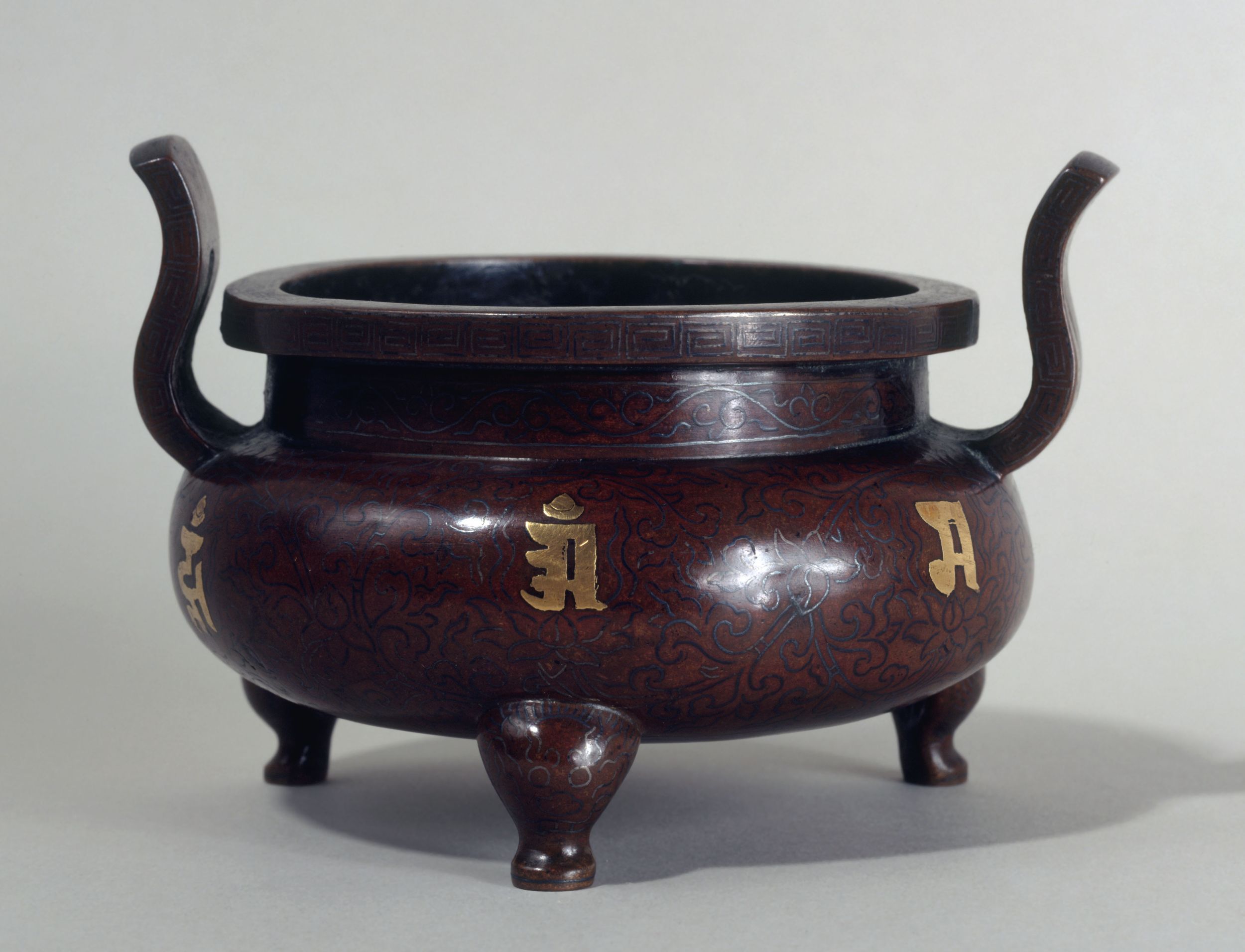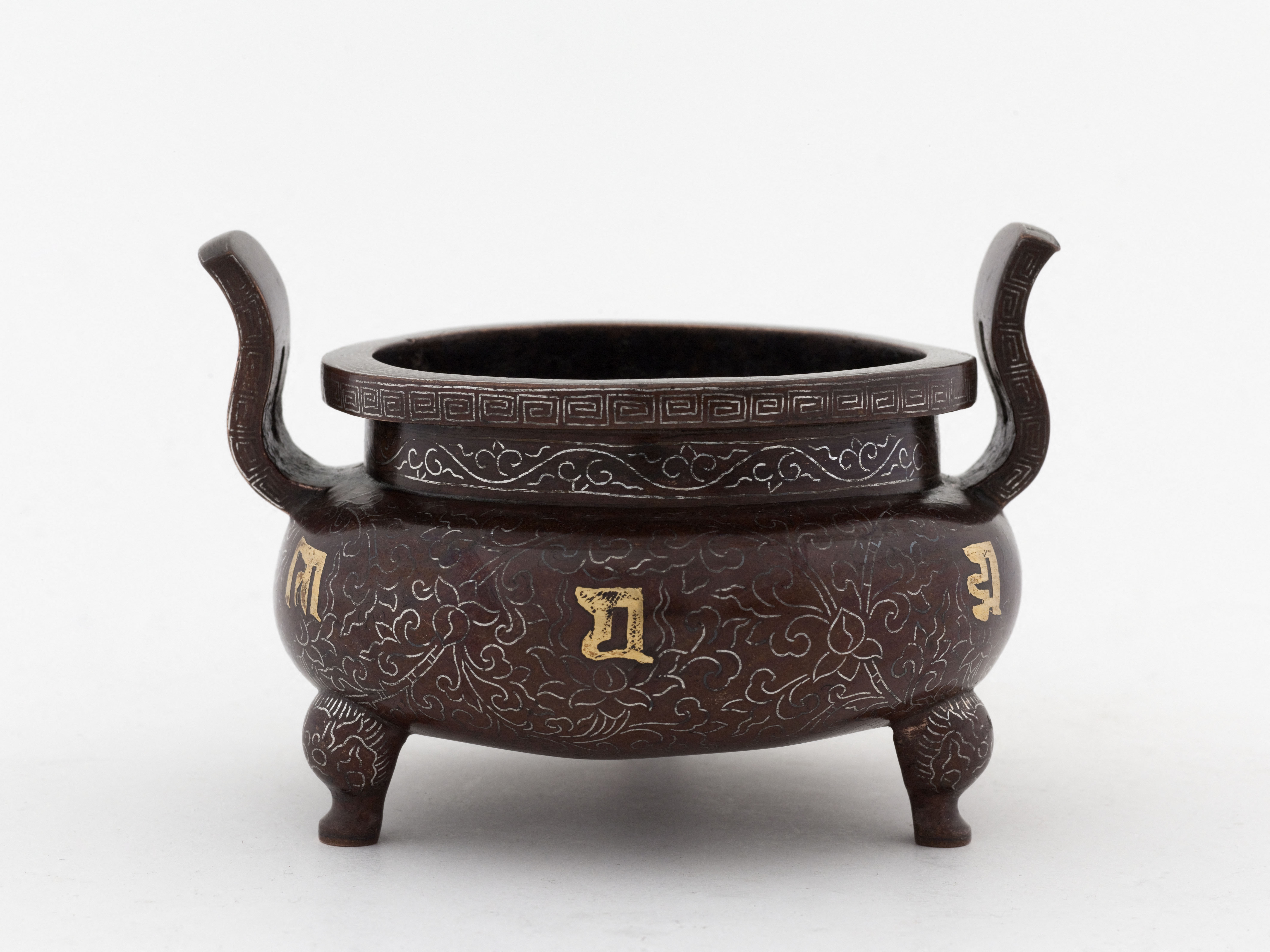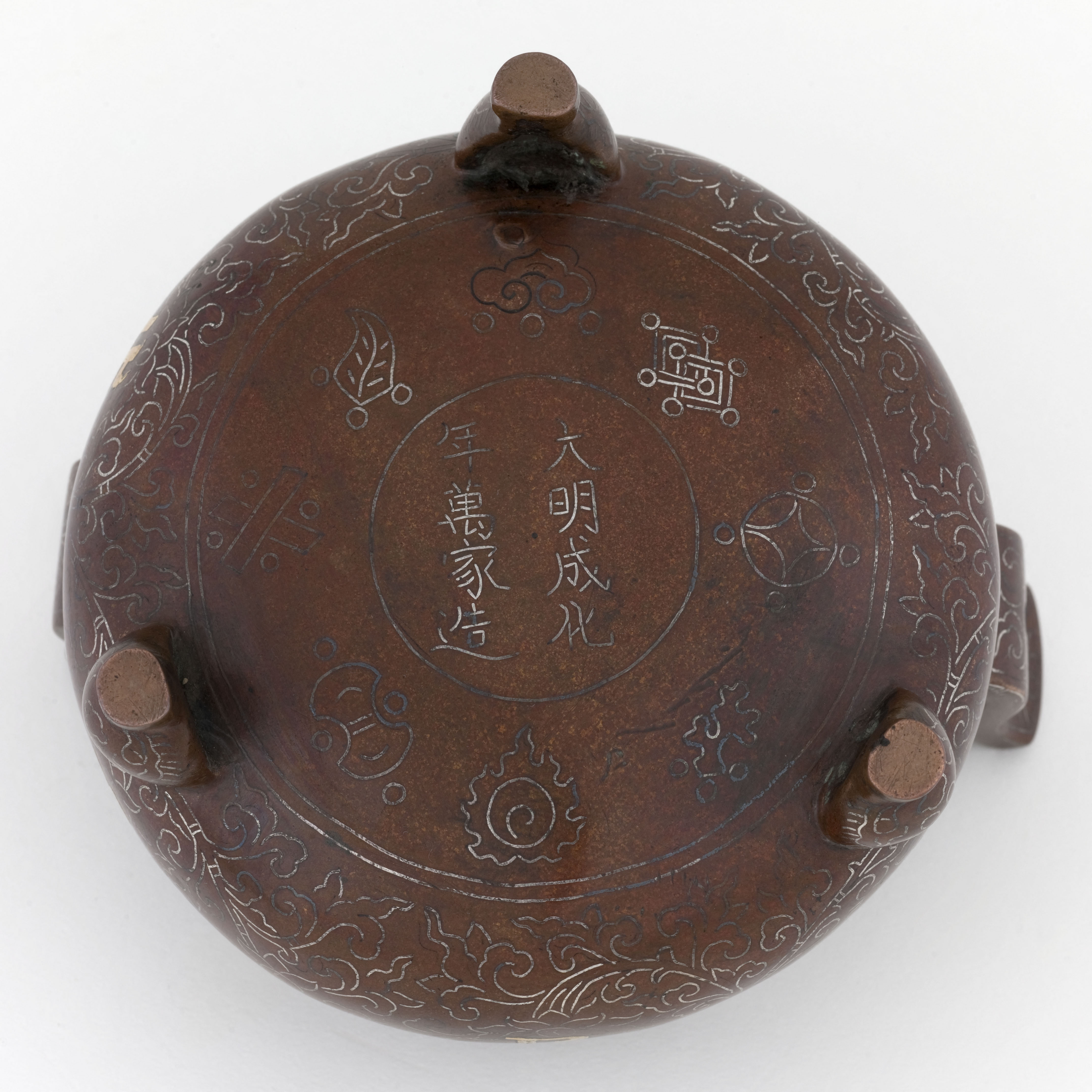
Brûle-parfum (xianglu 香爐)
Bronze, Fonte à la cire perdue, Incrustation
Objet symbolique, Brûle-parfum
Legs : Cernuschi, Henri
M.C. 171
Inscription under the base in silver inlay: 大明成化年万家造 [“Made by the Wan family in the Chenghua period of the Ming”] This vessel made use of a very specific technique: the feet are open on their inner side, rather like certain bronzes from the Song period. Another particularity is the colour of the metal: after cleaning, the surface appeared orangey-red under the feet. The high copper content is probably also responsible for the warm brown hue of the glaze, reddish in tone. The orange colour of the metal is unusual. The foliage motifs, the lantsa characters – a Tibetan writing system derived from Sanskrit – which retranscribe the ritual formula (mantra) “Om mani padme hum”, and the “precious objects” (zabao 杂保): all of this belongs to the iconographical repertory of the time and is treated here in the style of the Chenghua period. The form of the belly evokes the rounded shape of certain incense burners, and the handles those of 15th-century vases. However, it is not found in the cloisonné or porcelain models of the same period, although vases with a somewhat flattened belly appear in painted illustrations. It is therefore difficult to determine if this incense burner really dates from the Chenghua era or if it is an imitation from a relatively close period in time.
Michel Maucuer, Bronzes de la Chine impériale des Song au Qing, Paris Musées, 2013, p. 126

